 W
WSocial dance is a category of dances that have a social function and context. Social dances are intended for participation rather than performance and can be led and followed with relative ease. They are often danced merely to socialise and for entertainment, though they may have ceremonial, competitive and erotic functions.
 W
WAmerican social dancing has changed a lot through the decades. Social dance is a "classification of dance styles, where sociability and socializing are the primary focus". Some social dances include: ballroom dance, folk dance, square dance, line dance, and even club dancing. These are meant to be fun, and are not intended as competition or performance dances. Social dances reflect the period and culture in which they were originally created. The music involved with each type of dance is also crucial to the style of dance. For example, swing dancing is typically done to big band music, while jazz dance was done to jazz music.
 W
WArgentine tango is a musical genre and accompanying social dance originating at the end of the 19th century in the suburbs of Buenos Aires and Montevideo. It typically has a 24 or 44 rhythmic time signature, and two or three parts repeating in patterns such as ABAB or ABCAC. Its lyrics are marked by nostalgia, sadness, and laments for lost love. The typical orchestra has several melodic instruments and is given a distinctive air by the small button accordion called the bandoneon. It has continued to grow in popularity and spread internationally, adding modern elements without replacing the older ones. Among its leading figures are the singer and songwriter Carlos Gardel and composers/performers Francisco Canaro, Juan D'Arienzo, Carlos Di Sarli, Osvaldo Pugliese, and Ástor Piazzolla.
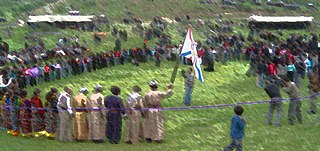 W
WAssyrian folk dances are sets of dances that are performed throughout the world by Assyrians, mostly on occasions such as weddings, community parties and other jubilant events.
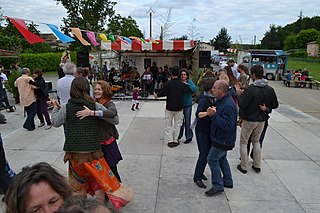 W
WBalFolk is a dance event for folk dance and folk music in a number of European countries, mainly in France, Belgium, the Netherlands, Germany and Italy. It is also known as folk bal.
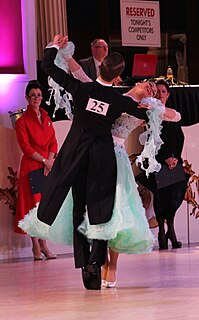 W
WBallroom dance is a set of partner dances, which are enjoyed both socially and competitively around the world. Because of its performance and entertainment aspects, ballroom dance is also widely enjoyed on stage, film, and television.
 W
WBlues dancing is a family of historical dances that developed alongside and were danced to blues music, or the contemporary dances that are danced in that aesthetic. Amateur Dancer carried an article entitled "Blues and Rhythm and Blues Dancing" in a July/August 1991 issue.
 W
WBoogaloo is a freestyle, improvisational street dance movement of soulful steps and robotic movements which make up the foundations of popping dance and turfing; boogaloo can incorporate illusions, restriction of muscles, stops, robot and/or wiggling. The style also incorporates foundational popping techniques, which were initially referred to as "Posing Hard". It is related to the later electric boogaloo dance.
 W
WContra dance is a folk dance made up of long lines of couples. It has mixed origins from English country dance, Scottish country dance, and French dance styles in the 17th century. Sometimes described as New England folk dance or Appalachian folk dance, contra dances can be found around the world, but are most common in the United States, Canada, and other Anglophone countries.
 W
WThe cotillion is a social dance, popular in 18th-century Europe and America. Originally for four couples in square formation, it was a courtly version of an English country dance, the forerunner of the quadrille and, in the United States, the square dance.
 W
WA country dance is any of a very large number of social dances of a type that originated in the British Isles; it is the repeated execution of a predefined sequence of figures, carefully designed to fit a fixed length of music, performed by a group of people, usually in couples, in one or more sets. The figures involve interaction with your partner and/or with other dancers, usually with a progression so that you dance with everyone in your set. It is common in modern times to have a "caller" who teaches the dance and then calls the figures as you dance.
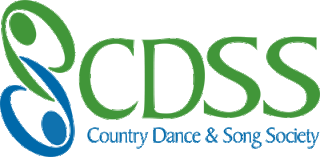 W
WThe Country Dance and Song Society is a nonprofit organization that seeks to promote participatory dance, music, and song with English and North American roots. Its vision statement is "Communities strengthened by dancing, singing, and making music together."
 W
WCountry/western dance, also called country and western dance, encompasses many dance forms or styles, which are typically danced to country-western music, and which are stylistically associated with American country and/or western traditions. Many of these dances were "tried and true" dance steps that had been "put aside" for many years, and became popular under the name(s) "country-western", "cowboy", or "country". Country dancing is also known as "kicker dancing" in Texas.
 W
WA dance party is a social gathering where dancing is the primary activity. Some dance parties are held in a casual setting and open to the public, such as a rave, or those held in nightclubs discothèques.
 W
WDhalo is a popular ritual folk dance form Goa, India. The dance is performed by women and serves as a prayer of protection for their households. The songs to which the dance is performed are usually sung in Konkani language or Marathi.The themes of such songs are commonly religious or social in nature. It is conducted over a period of 1 week in the month of Pousha at the onset of winter. On the final day women dress up elaborately and draw caricatures of men.
 W
WA Fest Noz is a Breton traditional festival, with dancing in groups and live musicians playing acoustic instruments.
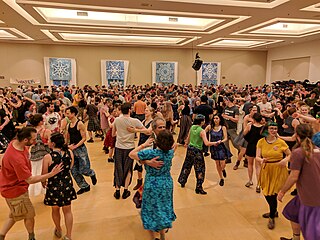 W
WThe Flurry Festival is an annual weekend festival held in February in Saratoga Springs, New York. The festival includes one of the largest contra dances in the U.S., as well as other types of traditional folk dance and music, and draws over 5000 attendees and 400 performers every year. It was first held in 1988 and is run by the nonprofit DanceFlurry Organization.
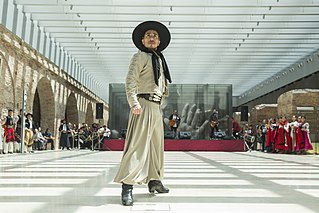 W
WA folk dance is a dance developed by people that reflect the life of the people of a certain country or region. Not all ethnic dances are folk dances. For example, ritual dances or dances of ritual origin are not considered to be folk dances. Ritual dances are usually called "Religious dances" because of their purpose. The terms "ethnic" and "traditional" are used when it is required to emphasize the cultural roots of the dance. In this sense, nearly all folk dances are ethnic ones. If some dances, such as polka, cross ethnic boundaries and even cross the boundary between "folk" and "ballroom dance", ethnic differences are often considerable enough to mention.
 W
WGandrung is a traditional dance from Indonesia. Gandrung has many variations and is popular in Bali, Lombok and East Java among the Balinese, Sasak and Javanese. The most popular variation is gandrung from the Banyuwangi region in the eastern peninsula of Java, so much that the city is often referred as Kota Gandrung or "the city of gandrung".
 W
WHumppa is a type of music from Finland. It is related to jazz and very fast foxtrot, played two beats to a bar. Typical speed is about 220 to 260 beats per minute. Humppa is also the name of a few social dances danced to humppa music. All dances involve bounce that follows the strong bass of the music. In Finnish language, the word humppa can also be used for all social dancing. The name humppa was invented by Antero Alpola for a radio show in the 1950s. He picked it up from German Oktoberfest where the locals used the word to describe the playing of the band. The band probably used a tuba, as the sound of tuba on the first beat is like hump, the second beat coming as a pa.
 W
WThe kolomyjka is a Hutsul (Ukrainian) music genre that combines a fast paced folk dance and comedic rhymed verses. It also refers to a type of performance dance developed by the Ukrainian diaspora in North America.
 W
WThe Lindy Hop is an American dance which was born in the African-American communities in Harlem, New York City, in 1928 and has evolved since then. It was very popular during the swing era of the late 1930s and early 1940s. Lindy was a fusion of many dances that preceded it or were popular during its development but is mainly based on jazz, tap, breakaway, and Charleston. It is frequently described as a jazz dance and is a member of the swing dance family.
 W
WA mixer dance, dance mixer or simply mixer is a kind of participation dance in a social dance setting that involves changing partners as an integral part. Mixing can be built into the dance choreography or can be structured to occur more randomly. Mixers allow dancers to meet new partners and allow beginners to dance with more advanced dancers. Some people may take advantage of mixers to assess dance skills of other persons without fear of being stuck with a poor match for an entire dance.
 W
WPartner dances are dances whose basic choreography involves coordinated dancing of two partners, as opposed to individuals dancing alone or individually in a non-coordinated manner, and as opposed to groups of people dancing simultaneously in a coordinated manner.
 W
WThe peacock dance or peafowl dance is a traditional Asian folk dance that describes the beauty and the movement of peacocks. There are several peacock dance traditions developed in Asia, among others are peacock dances of Myanmar, and in the western and northern parts of Cambodia, West Java in Indonesia, also peacock dances of Indian subcontinent in Southern India, Sri Lanka, and Bangladesh.
 W
WSalsa is a Latin dance associated with the music genre of the same name phenomenon popularized in the United States mid-20th century in New York City. Salsa is an amalgamation of Cuban dances that were popular in the ballrooms and nightclubs of Havana and New York City and by the end of the 1950s, as well as American jazz dances. It was primarily developed Puerto Ricans and Cubans living in New York in the late 1960s and early 1970s. Different regions of Latin America and the United States have distinct salsa styles of their own, such as Cuban, Puerto Rican, Colombian, and "New York styles". Salsa dance socials are commonly held in nightclubs, bars, ballrooms, restaurants, and outside, especially when part of an outdoor festival.
 W
WSequence dancing is a form of dance in which a preset pattern of movements is followed, usually to music which is also predetermined. Sequence dancing may include dances of many different styles. The term may include ballroom dances which move round the floor as well as line, square and circle dances.
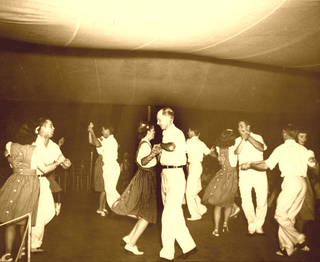 W
WA square dance is a dance for four couples arranged in a square, with one couple on each side, facing the middle of the square. Square dances contain elements from numerous traditional dances and were first documented in 16th-century England, but they were also quite common in France and throughout Europe. Early square dances, particularly English country dances and French quadrilles, traveled to North America with the European settlers and developed significantly there.
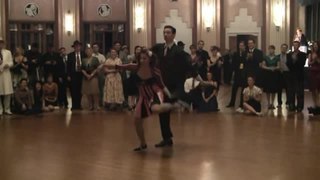 W
WSwing dance is a group of dances that developed with the swing style of jazz music in the 1920s–1940s, with the origins of each dance predating the popular "swing era". Hundreds of styles of swing dancing were developed; those that have survived beyond that era include Lindy Hop, Balboa, Collegiate Shag, and Charleston. Today, the best-known of these dances is the Lindy Hop, which originated in Harlem in the early 1930s. Swing dances began in African American communities as vernacular African American dances.
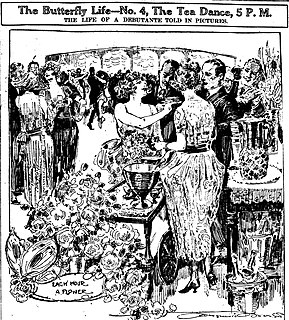 W
WA tea dance, also called a thé dansant, was a dance held in the summer or autumn from 4 to 7 p.m. In the English countryside, a garden party sometimes preceded the dance. The function grew out of the afternoon tea tradition, and J. Pettigrew traces its origin to the French colonization of Morocco.
 W
WThe turkey trot was a dance made popular in the early 1900s. The Turkey Trot was done to fast ragtime music popular in the decade from 1900 to 1910 such as Scott Joplin's Maple Leaf Rag. Driven largely by youth counterculture of the time, the turkey trot fad quickly fell out of favor as the foxtrot, a much more conservative dance step based on the waltz, rose to popularity in 1914.
 W
WWheelchair DanceSport is a partner dance competition and Dancesport where at least one of the dancers is in a wheelchair.
 W
WWheelchair DanceSport is a partner dance competition and Dancesport where at least one of the dancers is in a wheelchair.